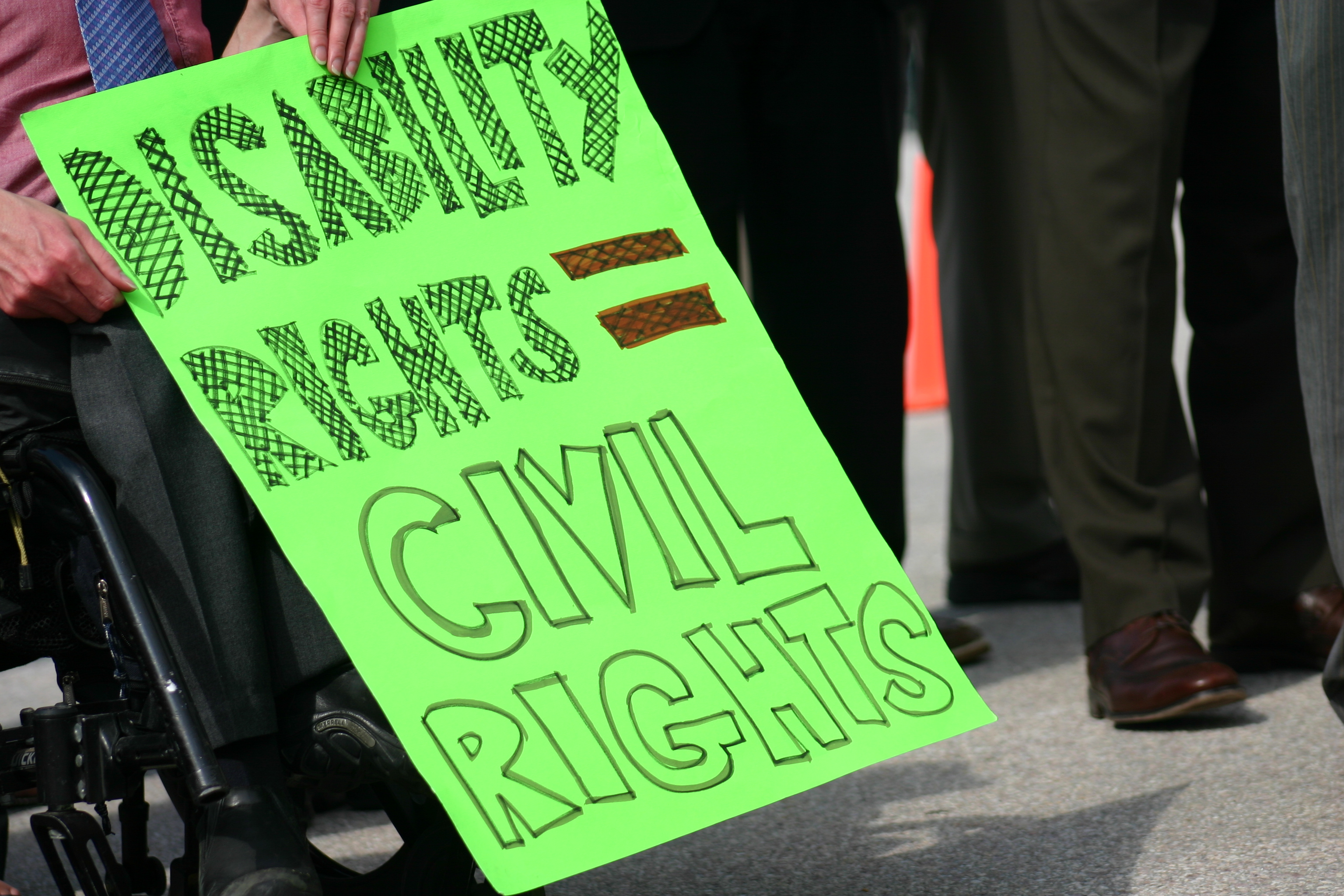5 Ways to Teach Disability History in Social Studies Class
By Kara Newhouse,
KQED
| 07. 29. 2024
Image by The Leadership Conference on Civil and Human Rights from Flickr licensed under CC by NC 2.0
A few years ago, curriculum specialist Richard Cairn showed a photo from the World War II era to two young men he was working with on a campaign to promote teaching disability history. The image shows a man with multiple disabilities processing airplane parts in an American defense plant. Cairn said the two volunteer leaders, who live with multiple disabilities, were surprised by the image. “They were excited to learn that people with disabilities had been involved in helping to fight fascism during World War II and upset that this had not been discussed in their high school history class,” Cairn said.
The young men’s excitement turned the photo into Cairn’s favorite image from disability history — and he has many to choose from. Cairn is one of the creators of Reform to Equal Rights, a free K-12 disability history curriculum that features 250 primary sources in its lesson plans. The curriculum is a project of the nonprofit Collaborative for Educational...
Related Articles
By Megan Molteni and Anil Oza, STAT | 10.07.2025
For two years, a panel of scientific experts, clinicians, and patient advocates had been hammering out ways to increase community engagement in National Institutes of Health-funded science. When they presented their road map to the NIH Director Jay Bhattacharya last...
By Shoumita Dasgupta, STAT | 10.03.2025
President Trump and health secretary Robert F. Kennedy Jr. have characterized the rise in autism diagnoses in recent years as an epidemic requiring emergency intervention.
This approach is factually wrong: The broadening definition of autism and the improvement in diagnosis...
By Abby McCloskey, The Dallas Morning News | 10.10.2025
We Texans like to do things our way — leave some hide on the fence rather than stay corralled, as goes a line in Wallace O. Chariton’s Texas dictionary This Dog’ll Hunt. Lately, I’ve been wondering what this ethos...
Paula Amato & Shoukhrat Mitalipov
[OHSU News/Christine Torres Hicks]
On September 30th, a team of 21 scientists from Oregon Health & Science University (OHSU) published a significant paper in Nature Communications, with a scientifically accurate but, to many, somewhat abstruse headline:
Induction of experimental cell division to generate cells with reduced chromosome ploidy
The lead authors were Shoukhrat Mitalipov, recently described here as “a push-the-envelope biologist,” and his long-term colleague Paula Amato. (Recall that in July the pair had co-published with...




